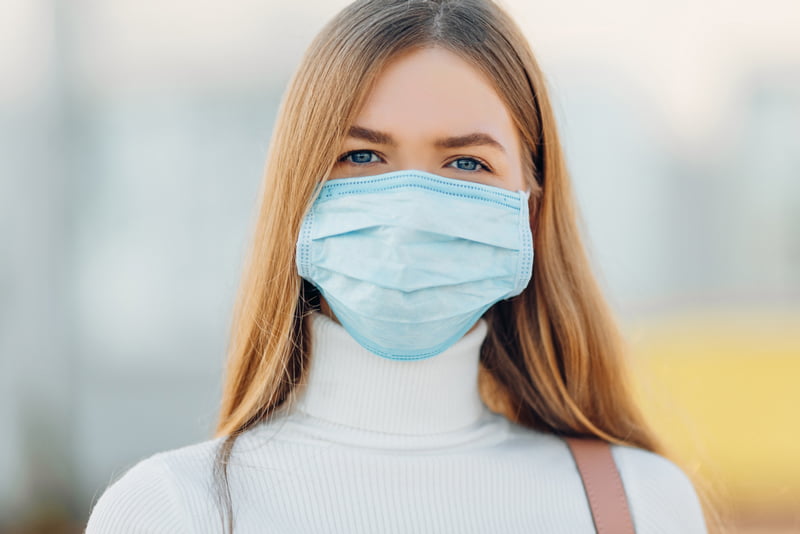Research and Studies About COVID-19 & Face Mask
The supplication from wellbeing specialists for the general population to wear face mask has escalated as of late, as Covid-19 cases keep on moving in numerous territories of the U.S. What’s more, a great deal of it has to do with what analysts are finding out about the adequacy of face covers.
A developing number of studies highlight the cover as a useful asset that can help control the spread of the Covid, which so far has tainted almost 3 million Americans.
The essential way the Covid spreads is from one individual to another by respiratory beads created when a tainted individual hacks, sniffles or talks. Face covers, nonetheless, can impede these beads. They go about as an obstruction to keep infection containing particles from getting away from a contaminated individual and arriving on someone else, clarifies Ron Waldman, M.D., teacher of worldwide wellbeing at the George Washington University (GWU) Milken Institute School of Public Health.
Another reproduction from specialists at Florida Atlantic University outlines exactly how viable face covers can be in decreasing the quantity of drops that are scattered into the air and the distance they travel. Without a cover, drops voyaged in excess of 8 feet. A bandanna slice the distance to 3 feet, 7 inches, and a collapsed cotton tissue decreased that distance significantly more, to 1 foot, 3 inches, the specialists note.
“There’s no question; it’s indisputable that wearing even a cloth face covering cuts down substantially on the amount of virus that’s shared by an individual,” Waldman says.
A few examinations, including a paper as of late distributed in the diary Nature, have tracked down that more than 40% of individuals with Covid contaminations never create manifestations of COVID-19. This makes it incredibly hard to recognize who is a possible transmitter of infection, Waldman says.
That is the reason wearing a cover, regardless of whether you trust you are sound, is suggested both by the CDC and the World Health Organization (WHO). It’s single direction to help forestall unconsciously spreading the infection to other people, particularly the individuals who are bound to turn out to be seriously sick whenever tainted by the Covid.
“It’s a sense of social responsibility,” says Neysa Ernst, R.N., a nurse manager of the Biocontainment Unit at the Johns Hopkins Hospital in Baltimore. You wear a mask because you “want to protect society,” she adds.
How You Can Select A Perfect Face Mask
A crucial step that anyone should take to avoid having and spreading COVID-19 is right and clear mask use. Face mask work best when everyone wears them, but the same security is not given by all masks “Emergency room in Sherman Texas says”. Look at how well it suits, how well it cleans the air, and how many layers it has, when selecting a mask.
Selection of Perfect Face Mask
- Make sure that your mask fits against your face snugly. Gaps may cause air to leak in and out around the edges of the mask with respiratory droplets.
- To hold the respiratory droplets in and out of others, select a mask with layers. If you are sick, a mask with layers can prevent more respiratory droplets from getting through your mask or escaping from your mask.
- Select a Nose Wire Mask
- A nose wire is a strip of metal around the top of the mask
- Nose wires keep the top of the mask from leaking out of the air.
- In order to fit close to your face, bend the nose wire over your nose.
The Right way to wear a mask
- Using a Fitter or Brace Mask
- To prevent air from escaping around the edges of the mask, use a mask fitter or brace over a disposable mask or a fabric mask.
- Make sure it fits snugly over your nose, mouth and chin.
- By cupping your hands around the outer edges of the mask, search for gaps.
- Make sure that no air flows from the area close to your eyes or from the mask’s sides.
- You can feel warm air coming through the front of the mask if the mask has a good fit, and will be able to see the mask material moving in and out with each breath.
- Two ways of layering
- Using a cloth mask that has many fabric layers.
- Wear a fabric mask with a single disposable mask underneath.
- The edges of the inner mask should be pressed against your face by the second mask.
The wrong way to wear a mask
- Combine two masks that are reversible,
- Disposable masks are not intended to fit securely and there would be no change in fit when wearing more than one.
- For every other mask, combine a KN95 mask.
- Using one KN95 mask at a time only.
” WHO Says “
Masks should be used as part of a comprehensive strategy of measures to suppress transmission and save lives; the use of a mask alone is not sufficient to provide an adequate level of protection against COVID-19.
If COVID-19 is spreading in your community, stay safe by taking some simple precautions, such as physical distancing, wearing a mask, keeping rooms well ventilated, avoiding crowds, cleaning your hands, and coughing into a bent elbow or tissue. Check local advice where you live and work.



